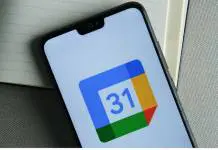
Google’s font project, Noto, is finally big enough to cover all 93 scripts originally contained in Unicode’s latest version, 6.0, released 2010. Project development started in 2012, and its first release came in 2013.
The project’s primary goal is to remove all instances of “tofu” from people’s computers. “Tofu,” in computer slang, refers to the white squares that appear on-screen when a user tries to type a character that’s not supported by their current font. “Noto” is short for “No more tofu” or just “No tofu.”
The official website is now offering two main fonts, Noto Sans and Serif, with four different styles. They support exactly 581 languages from 237 regions of the world. Specific fonts, for Native American, CJK (an acronym for Chinese, Japanese, Korean), and various European, Middle Eastern and South Asian scripts, among others, are also available.

Noto project’s origins
He stated part of that goal meant designing and building devices like Android and Chromebooks and that they wanted a font that could work with these devices everywhere in the world.
Google’s Noto Project started when they partnered with Monotype, a company founded by American investor and typeface pioneer Tolbert Lanston in 1887. Monotype’s five-year effort with Google now covers more than 800 languages and 100 writing scripts including downloadable emoji packages.
Monotype’s quest for linguistic preservation
Steve Matteson, creative director at Monotype, explained the team relied on street signs and engravings on buildings to create typefaces for minority scripts, writing systems used by minuscule communities.
Jung remarked that is crucial to preserve both smaller, academic, and dead languages, arguing that digital technology is the best way to do so. Kamal Mansour, Linguistic Typographer at Monotype, reiterated this was a way for these types to communities to create digital patrimony or heritage.
An article at Top Tech News also cited a blog spot by Jung and his partner Xiangye Xiao, they both stated that they had not initially realized the scope of the project, which became a huge struggle to include languages with scripts that don’t have many written sources to analyze.
Examples of this may include the Indo-Aryan Saurashtra language spoken by the Saurashtra community in Southern India, which is very seldom written down and the Adlam alphabet, based on the Latin script but used by speakers of the Fulani language in countries like Nigeria and Liberia. They are both currently available in Noto.
Source: Google blogs










